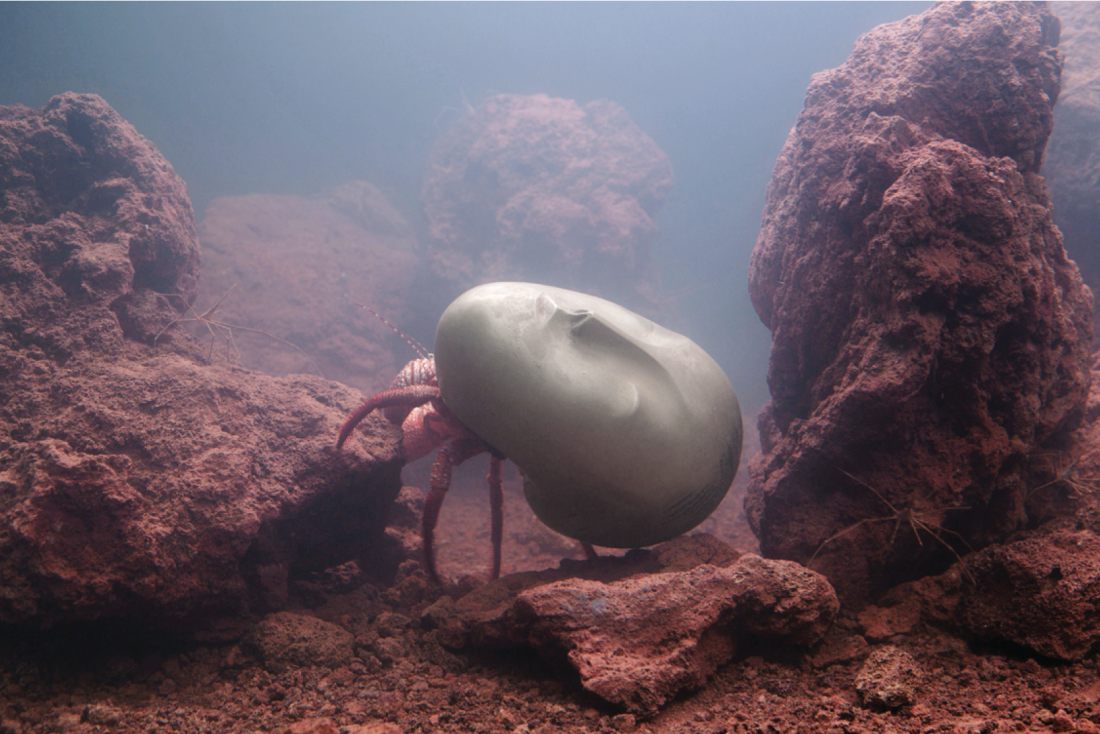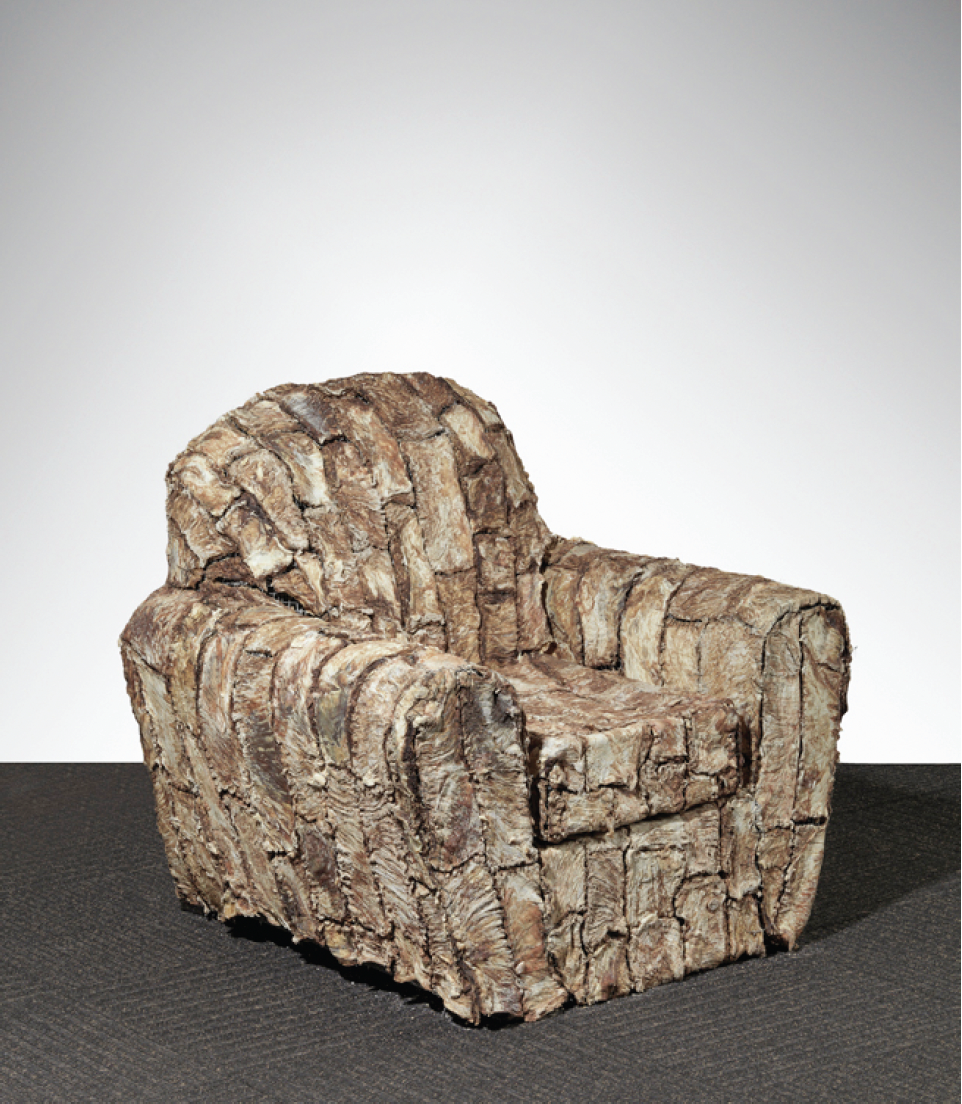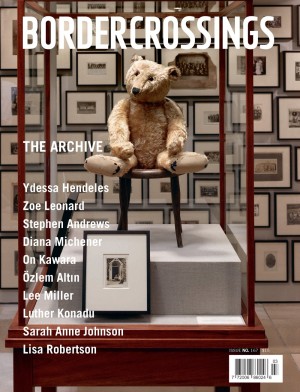“Zoo”
Like all good school-children, we know that a zoo (short for zoological park and also known formerly as a menagerie) is a facility in which animals are confined within garden-variety enclosures, where members of the public can view these animals at a near remove, with or without charge for admission, and in which the animals may also be bred in captivity. Zoo animals usually live in caged areas recreating something of their natural ecosystems, for the alleged benefit of the animals and the edification of human visitors. Significant public animal collections around the world now wildly exceed a thousand—80 percent of which are located in the hearts of cities. In the zoological garden recently installed at the Musée d’art contemporain de Montréal, the exhibiting artists all attempted, with varying degrees of success, to undermine and critique common stereotypes, to engage taxonomy and, often in exalting fashion, induce palpable tension in viewers.
In fact, this exhibition was not only a source of immensurable déjà vu, but examined with rare acuity and metaphorical finesse our relationship to the animal kingdom at a time when the natural order is so much in peril. With the unforeseen consequences of climate change and an ever-accelerating rate of species extinction, the zoo is suddenly a hot zone issue. Worryingly, the rate has accelerated dramatically in the last 50 years as a direct result (mostly) of the activities of human beings. (Some experts have hazarded that up to 50 percent of presently existing species will become extinct by the year 2100.) So the present exhibition read less as pure whimsy than perfectly topical.

Pierre Huyghe, Zoodram 5, 2011, live marine ecosystem, glass tank, filtration system, hermit crab, arrow crabs, basalt rocks, 30 x 53 x 39”. Courtesy the artist and Marian Goodman Gallery, New York.
Many commentators hold that animals that live in zoos are treated as voyeuristic objects rather than living creatures, and while this is undeniably true of the present exhibition as well, the close scrutiny made for a cascade of epiphanies. Highlights included Chinese dissident artist Ai Weiwei, whose aptly titled Zoo: Circle of Animals/Zodiac Heads: Gold, 2010, was shown here for the first time in Canada and set the tone for the show as a whole. It is a powerful reinterpretation of the 12 bronze animal heads representing the traditional Chinese zodiac that once adorned the famous water clock at the imperial gardens of Yuanmingyuan, in Beijing. The original heads vanished after French and English troops invaded the emperor’s palace in 1860. The MAC curators hold that the exhibited heads symbolize China’s “century of humiliation” by Western powers, and this is probably true.
In any case, Ai Weiwei’s work was a compelling and brazen summation of the show’s interlaced themes and the consummation of an artistic vision that stood head and shoulders (in audacity, at the very least) above the most baroque creations of Jeff Koons. Mark Dion’s Monument for the Birds of Puffin Island, 2009, has great visceral power: a tar-coated tree with a legion of tarred rats hanging as though lynched from the high branches in some ecological Armageddon—suggestive signs (although not given by Jesus, Paul or the prophets) that we have entered the end times, with the final judgment close at hand. David Altmejd executed Le Spectre et la Main, 2012, specifically for the exhibition. A quintessentially Altmejdian showstopper, it is a room-sized vivarium housing zebras that seem ambulatory and resemble a sort of linear zoetrope. It is interesting that the artist chose zebras here, since they have never been successfully domesticated, although once upon a time in the UK, the zoological collector Lord Walter Rothschild apparently used them to draw a carriage.
Shary Boyle’s subversive and seductive ceramics of human-animal interaction complemented her Beast, 2007. This remarkable painting shows an arresting human/animal hybrid licking its lips as though in anticipation of a thick marbled T-bone or porterhouse. Trevor Gould contributed a large-scale installation titled God’s Window, created specifically for the Musée Sculpture Garden, where it has been constructed on the fountain. The sculpture features a huge monkey in the act of urinating. The monkey is a signature form for the artist, and here it is presented as though locked in a cage. Its torso is ornamented with mirrors that, appropriately enough, catch our reflections and hold our bemused or mortified gaze.

Jana Sterbak, Chair Apollinaire, 1996, meat, thread, metal, 90 x 87 x 75.4 cm. Courtesy the artist, Galeria Toni Tàpies, Barcelona and Laroche/ Joncas, Montreal.
In Pierre Huyghe’s Zoodram 5, 2011, a large aquarium housed a live ocean crab wearing a very Brâncuşi-like head sculpture as its shell armature. Aquatic, oneiric and oceanic at once, this closed ecosystem seemed littered with the remnants and revenants of living and dead dreams. Brian Jungen’s stretched animal hide atop a freezer suggested animal harvesting while his other pieces also subjected prevailing tradition to incisive critique, updating and overhauling scores of cultural tropes. Kiki Smith presented Tied to Her Nature, 2002, a zoophilic sculpture of a bronze goat and a girl bound together in a lasting embrace, which was perhaps the most poetic and harrowing evocation of the whole Zoo.
Jana Sterbak’s Chair Apollinaire, 1996, had its Canadian premiere here. It is a “club” chair made entirely of neatly intermeshed blocks of dried meat. This revisited her famous meat dress (exhibited at the National Gallery of Canada in 1991) and is a worthy and arresting sequel. It reminds us that cowhide covered furniture is the flipside of the raw meat that lies underneath. Unlike the rotting flesh of the meat dress, the dried meat seems at first an otherworldly upholstery—and yet it too was harvested from the animal kingdom right here on earth.
Inside this latter-day artistic menagerie, we discovered a museum idyll surely undreamt of by the Association of Zoos and Aquariums. Zoos typically house more wild animals than domesticated ones, and this was certainly true of most of the works shown here. But perhaps the most striking tribute one can pay the ringmasters is that, in viewing the creatures that inhabited this specular menagerie, we soon found our own reflection staring back at us. ❚
“ZOO” was exhibited at Musée d’art contemporain de Montréal from May 24 to September 3, 2012.
James D Campbell is a writer and curator living in Montreal who contributes regularly to Border Crossings.

